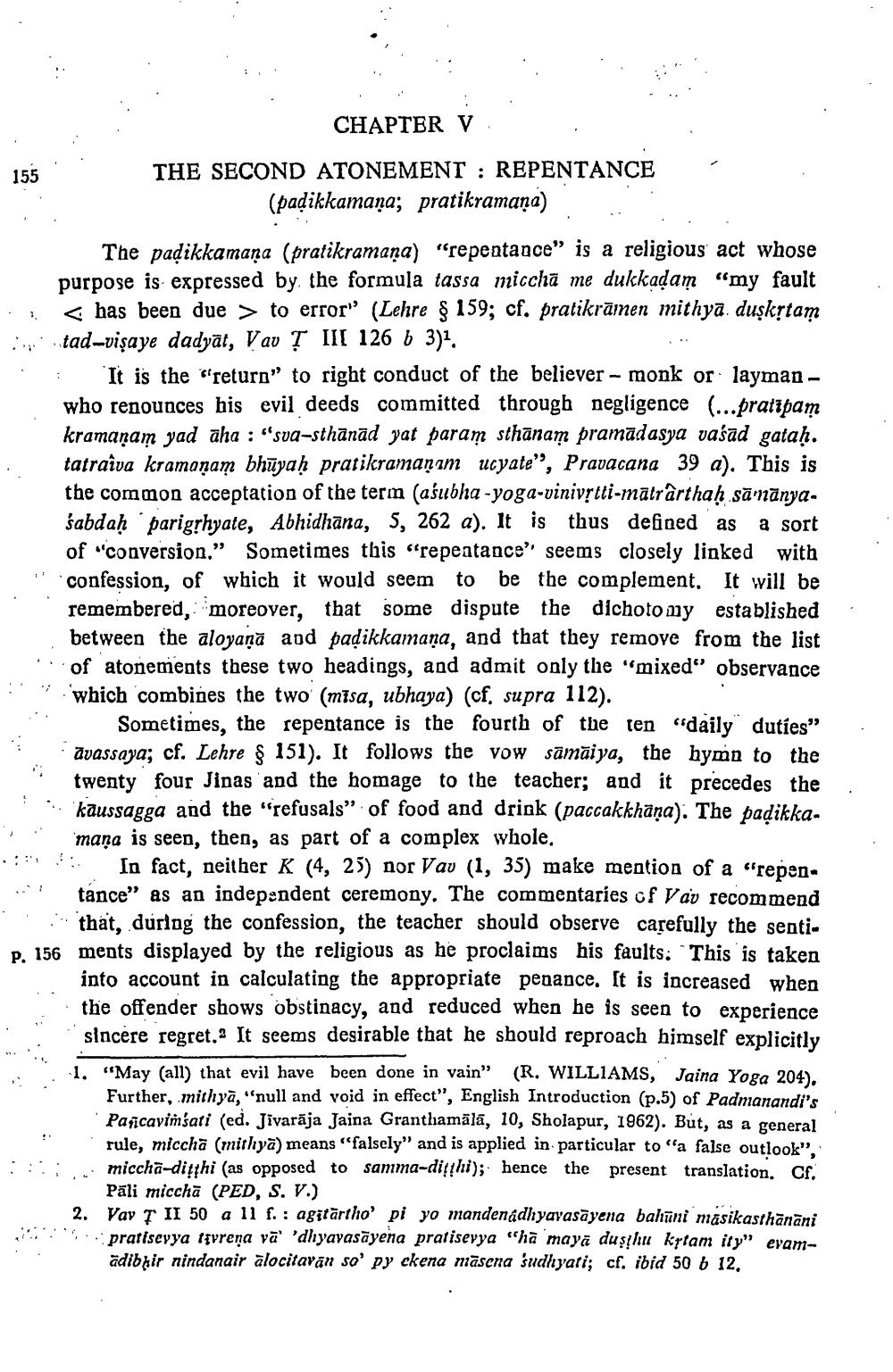________________
CHAPTER V
155'
THE SECOND ATONEMENT : REPENTANCE
(padikkamaņa; pratikramana)
The padikkamana (pratikramana) "repentance" is a religious act whose purpose is expressed by the formula tassa miccha me dukkadam "my fault
< has been due > to error" (Lehre $ 159; cf. pratikrāmen mithya. duşkstam is tad-vişaye dadyat, Vav Ţ III 126 6 3),
• It is the freturn” to right conduct of the believer - monk or layman - who renounces his evil deeds committed through negligence (...pratipam kramanam yad aha : "sva-sthānād yat param sthānam pramadasya vašad gatah. tatraiva kramanam bhūyaḥ pratikramanım ucyate", Pravacana 39 a). This is the common acceptation of the term (aśubha -yoga-vinivítti-maträrthah sānānya. sabdaḥ parigrhyate, Abhidhāna, 5, 262 a). It is thus defined as a sort of "conversion." Sometimes this "repentance' seems closely linked with confession, of which it would seem to be the complement. It will be remembered, moreover, that some dispute the dichotomy established
between the aloyaņā and padikkamana, and that they remove from the list ...of atonements these two headings, and admit only the "mixed" observance which combines the two (misa, ubhaya) (cf. supra 112).
Sometimes, the repentance is the fourth of the ten “daily duties" avassaya; cf. Lehre § 151). It follows the vow sāmāiya, the hymn to the
twenty four Jinas and the homage to the teacher; and it precedes the ... kaussagga and the "refusals” of food and drink (paccakkhāņa). The padikka
mana is seen, then, as part of a complex whole. .: . In fact, neither K (4, 25) nor Vav (1, 35) make mention of a "repen. 1 tance" as an independent ceremony. The commentaries of Vav recommend
that, during the confession, the teacher should observe carefully the sentip. 156 ments displayed by the religious as he proclaims his faults. This is taken
into account in calculating the appropriate penance. It is increased when the offender shows obstinacy, and reduced when he is seen to experience sincere regret. It seems desirable that he should reproach himself explicitly 1. "May (all) that evil have been done in vain" (R. WILLIAMS, Jaina Yoga 204).
Further, mithyā, "null and void in effect", English Introduction (p.5) of Padmanandi's Paficavimsari (ed. Jivarāja Jaina Granthamālā, 10, Sholapur, 1962). But, as a general
rule, miccha (mithya) means "falsely" and is applied in particular to'la false outlook". ::: miccha-ditthi (as opposed to samma-dithi); hence the present translation. Cf.
Pali micchā (PED, S. v.) 2. Vav T II 50 a 11 f.: agitārtho' pi yo mandenadhyavasāyena baliūni masikasthānāni
pratiscyya ffyrena vā' 'dhyavasāyena pratisevya "ha maya duşlu krtam ity" evamadibuir nindanair ālocitaran so'py ekena māsena sudhyati; cf. ibid 50 6 12.
1
twenty




